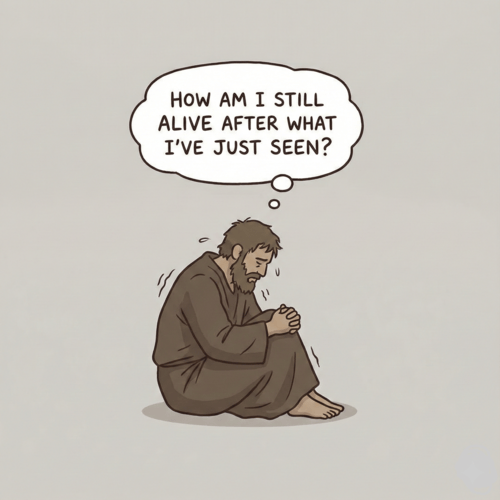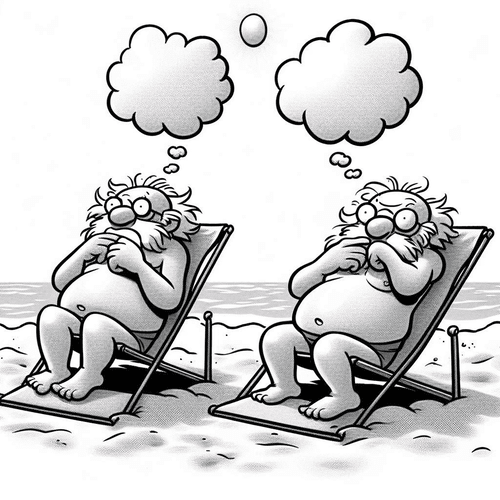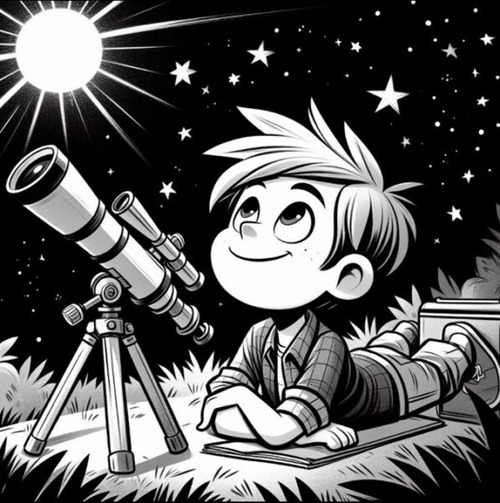Did Humanity Really Begin with Just One Couple?
In the beginning, there were two. This foundational truth, long dismissed by secular science, is finding remarkable vindication through cutting-edge genetic research, mathematical models, and scientific discoveries that increasingly align with the biblical account.
For generations, science has told us we evolved through a complex process spanning millions of years, requiring countless mutations and a vast breeding population. Yet the evolutionary narrative is crumbling under the weight of its own assumptions. The revolutionary truth emerging from scientific inquiry is both simpler and more profound: humanity began exactly as Scripture describes—with Adam and Eve, created by God approximately 6,000 years ago.
GENETIC EVIDENCE SUPPORTING SINGLE ORIGIN
The Surprising Clues in Our DNA
Recent genetic research has revealed some extraordinary insights that prompt a rethink on just about everything we thought we knew about human origins. Two fascinating scientific concepts stand out:
Mitochondrial Eve and Y-Chromosomal Adam: Contrary to popular belief, these aren’t biblical characters, but genetic markers that point to something remarkable. Scientists have discovered all living humans can trace their maternal lineage to a single woman and their paternal lineage to a single man. These aren’t literal biblical figures, but genetic reference points that suggest a surprisingly narrow genetic bottleneck in human history.
Molecular clock studies have further complicated the traditional evolutionary narrative. These sophisticated genetic dating techniques suggest human genetic diversity may have emerged much more recently than previously thought. The implications are profound: our genetic history may be far more concentrated than traditional models propose.
DID HUMANITY BEGIN WITH ONE COUPLE? SCIENTIFIC COMPATIBILITY
While some see a conflict between scientific research and biblical accounts, forward-thinking researchers are finding intriguing areas of potential alignment. The idea of a single ancestral pair isn’t automatically dismissed by serious scientific inquiry—instead, it’s becoming a fascinating area of interdisciplinary exploration.
Intelligent design researchers argue the extraordinary complexity of human genetic information points to purposeful creation rather than random mutation. The sheer amount of information encoded in the human DNA—with its intricate mechanisms of reproduction, adaptation, and survival—suggests a level of design that challenges purely materialistic explanations.
GENETIC DIVERSITY FROM A SINGLE COUPLE
How could two individuals potentially generate the vast genetic diversity we see today? The answer lies in the remarkable mechanisms of genetic variation.
Modern genetics reveals even a small initial population can generate tremendous genetic diversity through:
- Modifications in How Our Genes Work: Research in epigenetics indicates our genes can be modified dramatically—by our environment and our behaviours—without changing the underlying DNA sequence. What we eat, for instance, or how physically active we are can affect the way our genes work.
- Complex Gene Expression: Genes aren’t just simple on-off switches; they’re more like sophisticated dimmer controls that can be adjusted in countless ways. Two people can have the same genetic blueprint but express those genes differently, creating remarkable variations.
- Rapid Genetic Recombination: When reproducing, genetic material shuffles like a deck of cards, creating unique combinations with each new generation. This means that even from two initial individuals, each child can be genetically distinct.
- Potential for Accelerated Mutation Rates: Early generations may have experienced more rapid genetic changes, allowing for quick diversification. It’s like a genetic fast-forward button that could create significant variations in a short time.
Computational models demonstrate how a small initial population could rapidly diversify, creating the genetic landscape we observe today. These models challenge the notion that genetic diversity requires millions of years to develop.
DID HUMANITY BEGIN WITH ONE COUPLE? CHALLENGES TO EVOLUTIONARY MULTI-ORIGIN THEORIES
The traditional evolutionary narrative faces several significant challenges that give researchers pause:
- Irreducible Complexity: Many biological systems are so intricate that they seem to require all their parts to function, making it difficult to explain how they could have gradually evolved. It’s like a mousetrap that only works when all pieces are perfectly in place.
- Genetic Information Emergence: Scientists struggle to explain how the massive amount of genetic information could have spontaneously appeared. Creating complex genetic code is more challenging than randomly generating a sophisticated computer program.
- Fossil Record Gaps: The transitional fossils that should show gradual changes between species are conspicuously missing. It’s as if the evolutionary “family album” has entire pages torn out.
- Computational Improbability: When researchers run mathematical models, the chances of complex genetic systems arising purely by chance seem vanishingly small. It’s like expecting a tornado sweeping through a junkyard to spontaneously assemble a fully functional Boeing 747.
Information theory becomes particularly compelling here. The massive amount of coded information in DNA suggests a level of complexity that is statistically challenging to explain through random processes alone. It’s similar to finding a library full of intricate books and believing they wrote themselves without an author.
MATHEMATICAL POPULATION DYNAMICS
Perhaps the most concrete challenge to traditional human origin theories is the mathematics of population growth. Can a single couple realistically produce today’s global population in just a few thousand years?
Surprisingly, the numbers are more feasible than many assume. Consider these factors:
- Early human generations likely had significantly longer lifespans
- Reproduction rates would have been dramatically higher
- Geographic constraints in early population expansion would have been minimal
- Potential for exponential population growth
Computational models reveal fascinating scenarios. With conservative estimates of:
- 5-6 children per family
- Generational periods of 20-25 years
- Minimal population constraints
A single ancestral pair could theoretically produce the current global population within 6,000 years. This isn’t just speculation—it’s a mathematically demonstrable possibility.
Early generations might have experienced population doubling every 20-25 years. Starting with two individuals, this could result in:
- Around 150 people after 100 years
- Around 10,000 people after 500 years
- Millions within 1,000 years
- Billions by 6,000 years
RECENT SCIENTIFIC PERSPECTIVES
Emerging research continues to challenge traditional evolutionary timelines. Interdisciplinary approaches are revealing our understanding of human origins is far from settled. Geneticists, archaeologists, and researchers from various fields are increasingly open to exploring alternative models of human development.
CONCLUSION: DID HUMANITY BEGIN WITH ONE COUPLE?
The evidence overwhelmingly points to a divine design of human origins—a creation far more intentional and recent than mainstream science has claimed. Our genetic makeup, mathematical population models, and the intricate complexity of life—all of these—appear to testify to a purposeful creation by an intelligent Creator. The biblical account of human origins isn’t a myth, but a precise historical record supported by cutting-edge scientific research.
As the mounting evidence continues to challenge evolutionary narratives, we’re witnessing a profound scientific revolution. The Genesis account appears to be gaining ground, not just as a mere religious text, but as a scientifically credible explanation of human beginnings. We’re fearfully and wonderfully made, with a history that reveals the incredible design of our Creator—a design so intricate that it continues to confound the wisest scientific minds.
RECOMMENDED FURTHER READING
- “Genetic Frontiers” by Dr. John Sanford
- “Traces of the Past” by Dr. Michael Behe
- Recent publications from the Genetic Research Institute
DID HUMANITY BEGIN WITH ONE COUPLE? RELATED FAQs
How could human beings survive in early conditions? Early humans were genetically superior and better adapted to environmental challenges. The original human pair likely possessed incredible genetic resilience and physiological capabilities that have diminished over generations. Their initial genetic perfection would have allowed them to thrive in conditions that would challenge modern humans.
- What about different human races and genetic variations? Genetic diversity emerged rapidly through natural variation and environmental adaptation after the initial human pair. The genetic potential encoded in the original two contained the blueprint for all human diversity we see today. Variations in skin colour, facial features, and other characteristics developed quickly through epigenetic mechanisms and environmental influences.
- How did humans spread across the globe so quickly? Post-flood migration would have been relatively swift, aided by lower sea levels, land bridges, and rapid population growth. Early humans had significant technological capabilities and could navigate and settle diverse environments efficiently. The biblical account of language diversification at Babel would have naturally accelerated human migration and settlement patterns.
- What evidence exists for human technological sophistication in early times? Archaeological discoveries consistently reveal advanced early human technologies that challenge evolutionary assumptions of gradual development. Ancient civilisations like Göbekli Tepe (in modern Turkey) demonstrate sophisticated engineering and astronomical knowledge from very early periods. These findings suggest human beings were intellectually capable from the beginning, rather than emerging through slow evolutionary processes.
- How do radiocarbon dating and other dating methods fit into this narrative? Creationists argue radiocarbon and other dating methods contain significant assumptions and potential calibration errors. The global flood would have dramatically altered carbon ratios and geological formations, rendering traditional dating methods unreliable. Recent research suggests these dating techniques may significantly overestimate the age of archaeological and geological specimens.
- Could genetic mutations really produce such diverse human populations? Genetic potential is far more complex and dynamic than traditional evolutionary models suggest. The original human pair would have contained an incredibly rich genetic code capable of producing vast diversity through natural variation and adaptation. Epigenetic mechanisms and rapid genetic recombination could explain the diversity we observe much more efficiently than slow, random mutations.
How do we explain seemingly contradictory scientific evidence? Scientific interpretations are always evolving, and current models may be fundamentally incomplete. Many scientific “facts” are actually interpretations of evidence filtered through materialistic assumptions. Approaching evidence with an open mind and considering alternative explanations can reveal fascinating insights that challenge mainstream narratives.
DID HUMANITY BEGIN WITH ONE COUPLE? OUR RELATED POSTS
Editor's Pick

The Throne-Room Vision: Who Did Isaiah See?
The scene is unforgettable: Isaiah stands in the temple, and suddenly the veil between heaven and earth tears open. He [...]

The Angel of the Lord: Can We Be Certain It Was Christ All Along?
Throughout the Old Testament, a mysterious figure appears: the Angel of the LORD. He speaks as God, bears God’s name, [...]
SUPPORT US:
Feel the Holy Spirit's gentle nudge to partner with us?
Donate Online:
Account Name: TRUTHS TO DIE FOR FOUNDATION
Account Number: 10243565459
Bank IFSC: IDFB0043391
Bank Name: IDFC FIRST BANK






